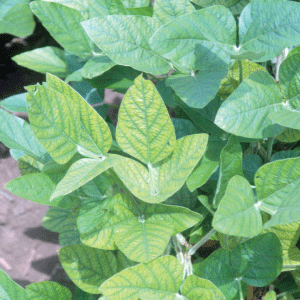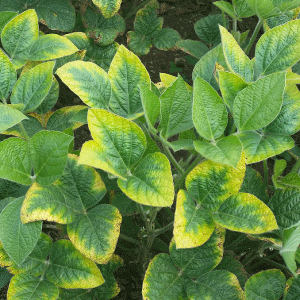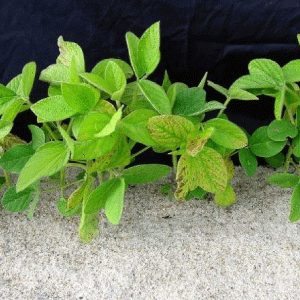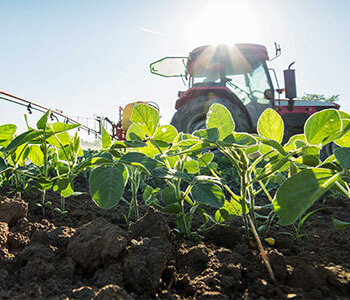Detecting Nutrient Deficiencies in Soybeans
Jul 08, 2020
Do you know what to look for when assessing nutrient deficiencies in your crops? Below are a few examples of what to look for in soybeans.
Manganese is essential for the formation of nodules in legumes. It increases the number of pollen grains and percent pollination. Manganese plays a key role in the plants immune system and plant health. Manganese functions as an activator of an enzyme that is involved in the evolution of oxygen in photosynthesis.
Timing a manganese application between R1 and R4 will help ensure that plants have enough of the nutrient to help put on flowers and fill pods.

Symptoms of manganese deficiency include yellow tissue between veins on new plant leaves, followed by brown, dying tissue.
Potassium is important for nodule formation and nitrogen fixation in soybeans. It is often credited with overall plant health. Sufficient potassium levels can also help the plant fight drought conditions.

Symptoms of potassium deficiency include yellowing of the leaf edges.
Zinc is part of auxin, one of the well-known enzymes regulating plant growth. It is necessary for chlorophyll synthesis and carbohydrate formation.

Leaves of soybeans have stunted stems and chlorotic interveinal areas on younger leaves. Later, the leaves may turn brown giving the plant a bronze appearance. Fewer pods are set and seed number is reduced.
We also recommend checking boron levels in soybeans. Boron plays a big role in plant health by moving carbohydrates throughout the plant. Be sure to analyze your micro-nutrient levels throughtout the season via tissue sampling to ensure you are maximizing yield potential.
Contact your MWF agronomist today to discuss your nutrient needs.
Find us on Facebook here: https://www.facebook.com/MWFertilizer/
and Twitter: https://twitter.com/MWFertilizer

Manganese is essential for the formation of nodules in legumes. It increases the number of pollen grains and percent pollination. Manganese plays a key role in the plants immune system and plant health. Manganese functions as an activator of an enzyme that is involved in the evolution of oxygen in photosynthesis.
Timing a manganese application between R1 and R4 will help ensure that plants have enough of the nutrient to help put on flowers and fill pods.

Symptoms of manganese deficiency include yellow tissue between veins on new plant leaves, followed by brown, dying tissue.
Potassium is important for nodule formation and nitrogen fixation in soybeans. It is often credited with overall plant health. Sufficient potassium levels can also help the plant fight drought conditions.

Symptoms of potassium deficiency include yellowing of the leaf edges.
Zinc is part of auxin, one of the well-known enzymes regulating plant growth. It is necessary for chlorophyll synthesis and carbohydrate formation.

Leaves of soybeans have stunted stems and chlorotic interveinal areas on younger leaves. Later, the leaves may turn brown giving the plant a bronze appearance. Fewer pods are set and seed number is reduced.
We also recommend checking boron levels in soybeans. Boron plays a big role in plant health by moving carbohydrates throughout the plant. Be sure to analyze your micro-nutrient levels throughtout the season via tissue sampling to ensure you are maximizing yield potential.
Contact your MWF agronomist today to discuss your nutrient needs.
Find us on Facebook here: https://www.facebook.com/MWFertilizer/
and Twitter: https://twitter.com/MWFertilizer

Max-In® for Beans is an effective, foliar-applied nutritional product, formulated with innovative ingredients to increase nutrient uptake and availability to plants. It delivers boron, iron, manganese, molybdenum and zinc to help promote plant strength and production. Contact your MWF agronomist today!